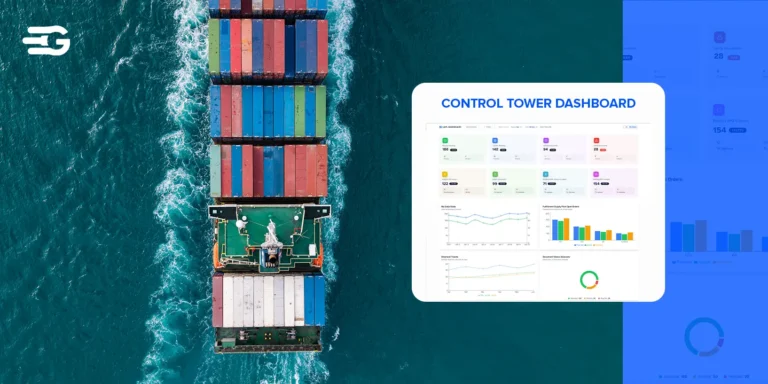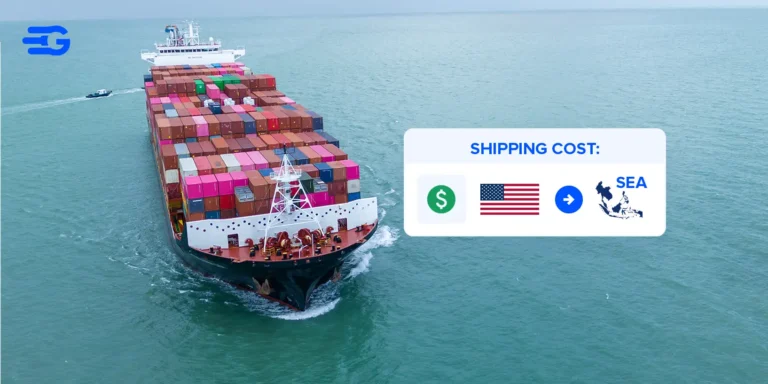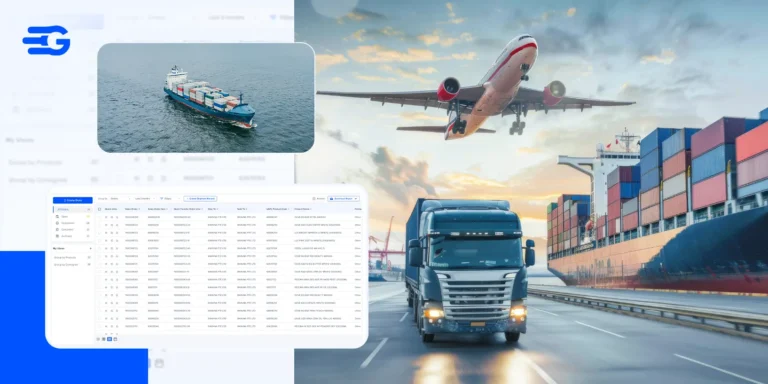10 Supply Chain Best Practices for Peak Efficiency [2025 Guide]
Your drivers are stuck in traffic. Your biggest client just doubled their order. And somewhere between the warehouse running out of space and three different suppliers giving you three different delivery dates, you’re wondering if there’s a better way to run this thing.
Every supply chain business owner deals with the same headaches. The good news? Some companies have figured out how to make it look easy. After researching what separates the smooth operators from the constant crisis managers, we’re here with ten supply chain best practices that actually move the needle. WIthout any further ado, let’s directly dive in.
Supply Chain Best Practice #1: Create Backup Suppliers for Your Top 20% Critical Items
Most businesses treat all their suppliers equally, which is a costly mistake during disruptions.
The 80/20 rule applies to supply chains as well: roughly 20% of your inventory items could shut down operations if they become unavailable, while the other 80% cause minor inconvenience at worst. Focus your backup supplier efforts on:
- Production-critical components – Items that stop your manufacturing line or key service delivery if unavailable
- Long lead-time materials – Products requiring 30+ days to source, where delays create cascading problems
- Single-source dependencies – Any item where you currently rely on just one supplier due to specialization or cost
- High-revenue product inputs – Components for your best-selling or highest-margin offerings
Don’t wait for emergencies to start vendor qualification. Test backup suppliers with small trial orders during normal operations. Verify their capacity, quality standards, and delivery reliability when there’s no crisis pressure.
If possible, negotiate standby agreements that guarantee capacity allocation during disruptions.
Supply Chain Best Practice #2: Implement Real-Time Multi-Modal Shipment Tracking
Most logistics teams still track shipments by calling carriers or checking multiple websites manually. This reactive approach means you learn about delays after your customers do, putting you in constant damage control mode instead of proactive management.
Real-time tracking across ocean, air, road, and rail freight from a single dashboard changes everything.
It’s one of the non-negotiable supply chain best practices. Modern platforms like GoComet use GPS data, port systems, and carrier APIs to provide live location updates and predictive ETAs.
You can set automated alerts for delays, route changes, or when shipments reach specific milestones.
Supply Chain Best Practice #3: Use ABC Analysis to Prioritize Inventory Management Efforts
Not all inventory deserves equal attention, but most businesses manage stock as if every SKU has the same importance. This scattered approach wastes management time on low-impact items while critical products get insufficient oversight.
Here’s an example of how you can use it.
Category A (High Value/Low Quantity – ~20% of items, 70-80% of value):
- Daily monitoring and tight control
- Weekly demand forecasting updates
- Multiple supplier relationships
- Safety stock calculations based on service level requirements
Category B (Medium Value/Medium Quantity – ~30% of items, 15-25% of value):
- Weekly review cycles
- Monthly forecast adjustments
- Standard reorder points with moderate safety stock
Category C (Low Value/High Quantity – ~50% of items, 5-10% of value):
- Monthly or quarterly reviews
- Simple reorder systems
- Higher inventory levels acceptable due to low holding costs
ABC analysis appears in every guide to supply chain best practices for good reason. This classification lets you allocate management attention where it matters most. A-items get executive focus because disruptions hurt revenue immediately. C-items can run with basic automated systems.
Supply Chain Best Practice #4: Implement Intelligent Invoice Auditing Systems
According to Docuclipper, approximately 4 out of 10 invoices include billing mistakes or inaccuracies. Manual invoice processing creates a perfect storm of errors, delays, and overpayments. Finance teams spend hours matching freight invoices to original quotes, often missing discrepancies that result in paying incorrect charges or duplicate fees.
Using intelligent auditing systems like GoComet can allow you to add OCR technology and AI to automatically scan incoming invoices and compare them against original quotations, contracts, and purchase orders. The system flags discrepancies (wrong rates, unauthorized surcharges, or billing errors) before payment processing. This catches mistakes that manual reviews miss due to volume and complexity.
This technology-driven approach to invoice management represents one of the most cost-protective supply chain best practices for preventing revenue leakage.
Supply Chain Best Practice #5: Plan for Port Congestion and Shipping Delays
Reactive shipping planning treats delays as surprises, but port congestion and seasonal shipping bottlenecks follow predictable patterns. Planning around these known disruptions prevents emergency expediting costs and customer disappointment.
Build delay planning into your shipping strategy:
- Monitor port congestion data for your key shipping routes during peak seasons
- Add buffer time to shipping schedules for known busy periods (Chinese New Year, pre-holiday shipping)
- Identify alternative ports and routing options before you need them
- Negotiate flexible booking terms that allow schedule adjustments without penalties
For example, when the Red Sea crisis forced widespread route diversions, GoComet’s predictive analytics helped companies navigate to alternative ports while keeping stakeholders informed about changing delivery timelines.
Book earlier departures during known congestion periods rather than hoping for normal transit times.
Supply Chain Best Practice #6: Create Standard Operating Procedures for Common Disruptions
When supply chain disruptions hit, having predetermined response plans prevents panic decisions that often make problems worse. Most companies waste critical time figuring out what to do instead of executing proven solutions immediately.
Develop specific playbooks for predictable disruptions:
- Weather delays: Pre-approved alternative routing, expedited shipping authorization levels, customer communication templates
- Supplier issues: Backup vendor contact lists, emergency procurement procedures, quality verification shortcuts
- Port strikes: Alternative port options, intermodal routing plans, inventory allocation priorities
- Technology failures: Manual backup processes, vendor escalation procedures, data recovery protocols
Each playbook should include: decision trees for different scenarios, pre-negotiated rates with backup providers, authorized spending limits for different team members, and templated customer communications that maintain professionalism during chaos.
Supply Chain Best Practice #7: Measure Perfect Order Rate, Not Just On-Time Delivery
Tracking perfect order rates is one of the most customer-focused supply chain best practices. On-time delivery percentages tell an incomplete story about customer satisfaction. A shipment can arrive on schedule but still fail the customer if it’s the wrong product, damaged, or invoiced incorrectly. Perfect order rate captures the complete customer experience.
Perfect order rate measures shipments that meet all customer requirements: right product, right quantity, right condition, right time, and right documentation/pricing. This comprehensive metric reveals problems that on-time delivery percentages miss. A 95% on-time rate might look good until you discover that 15% of orders have quantity errors or damage issues.
Tracking perfect orders forces you to address quality issues across the entire fulfillment process, not just transportation speed. It identifies whether problems stem from warehouse picking, packaging, carrier handling, or invoicing errors.
Supply Chain Best Practice #8: Implement Cross-Docking for Fast-Moving Products
Most warehouses store everything, even products with predictable demand that could skip storage entirely. Cross-docking eliminates unnecessary handling by moving goods directly from inbound to outbound trucks without warehouse storage, reducing costs and speeding delivery times.
It’s one of the most efficiency-driven supply chain best practices. Ideal candidates for cross-docking include:
- High-velocity products with consistent demand patterns
- Items with short shelf life that benefit from reduced handling
- Products ordered in full case quantities that don’t require picking
- Seasonal items during peak demand periods
- Pre-allocated inventory going to specific customers or stores
Set up dedicated cross-dock areas separate from regular warehouse operations. Coordinate inbound and outbound schedules to minimize dock time. Use barcode scanning to match incoming shipments with outbound orders automatically.
Cross-docking works best for products you can predict and pre-allocate before they arrive. Distribution efficiency improvements like this drive adoption in warehouse-focused supply chain best practices.
Supply Chain Best Practice #9: Negotiate Flexible Capacity Contracts with 3PLs
Fixed-capacity contracts with third-party logistics providers create problems during demand fluctuations. You either pay for unused space during slow periods or scramble to find additional capacity when business picks up, often at premium rates.
Negotiate priority access during peak seasons when 3PLs choose which customers get scarce capacity. Establish clear escalation procedures and service level guarantees that remain consistent across different capacity levels..
Supply Chain Best Practice #10: Install GPS Tracking on All High-Value Shipments
Standard tracking provides status updates, but GPS tracking gives real-time location data for shipments that could significantly impact your business if they go missing or get delayed. High-value shipments justify the additional tracking investment. While not every company needs GPS on every shipment, selective deployment has become common in risk-management focused supply chain best practices.
Use tracking data proactively to communicate with customers about precise delivery windows and potential delays. Set up geofencing alerts that notify customers automatically when shipments reach specific milestones or encounter unexpected stops.
With GPS tracking, you can resolve issues before customers notice them and provide accurate delivery estimates that improve customer satisfaction.
Final Words
Implementing these supply chain best practices won’t happen overnight, but starting with technology-enabled changes often delivers the fastest results.
You can actually combine 3-4 of these supply chain best practices rather than trying to implement everything at once.Using an integrated solution like GoComet can make things even easier. To know how, book a demo here.





